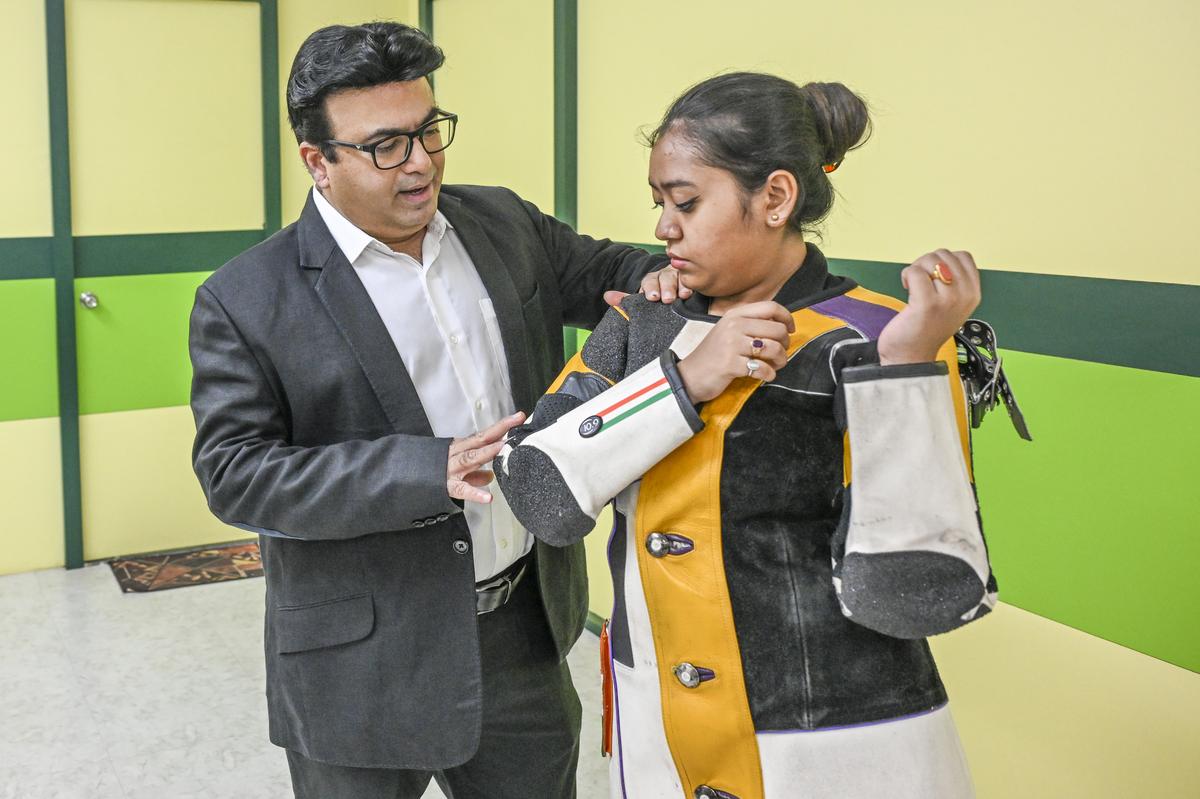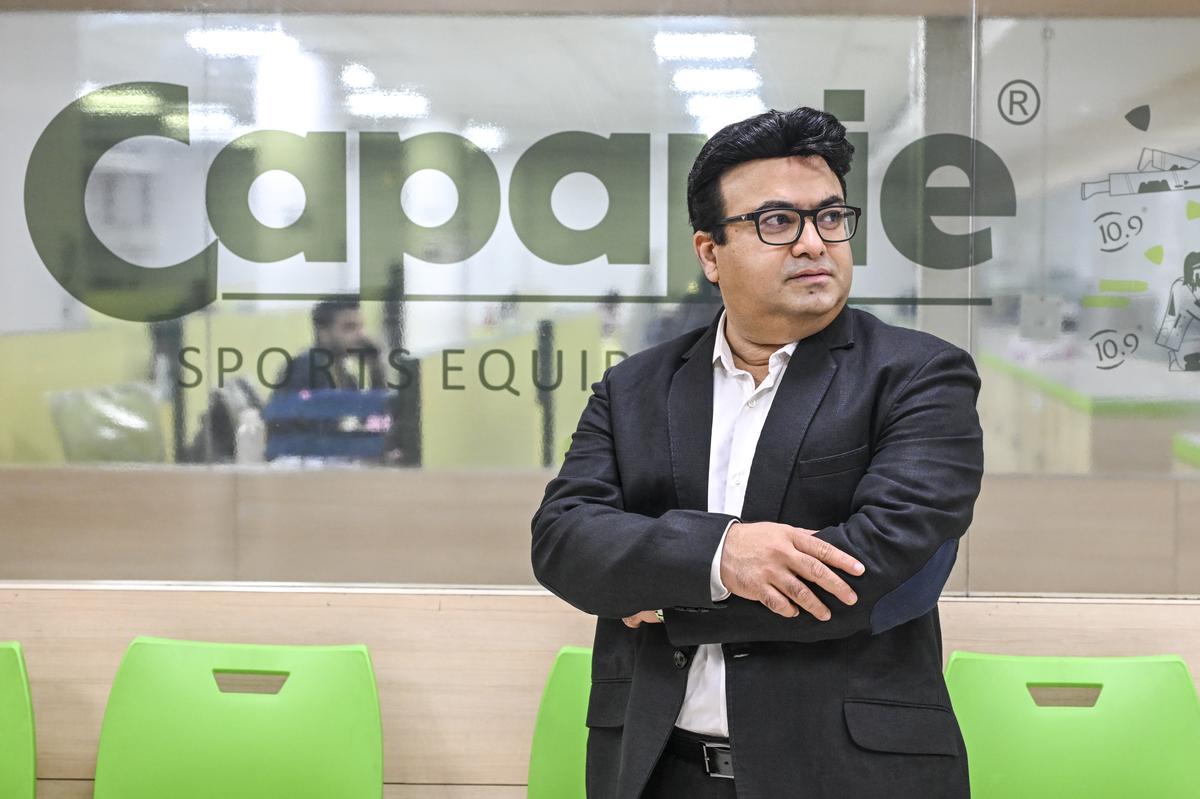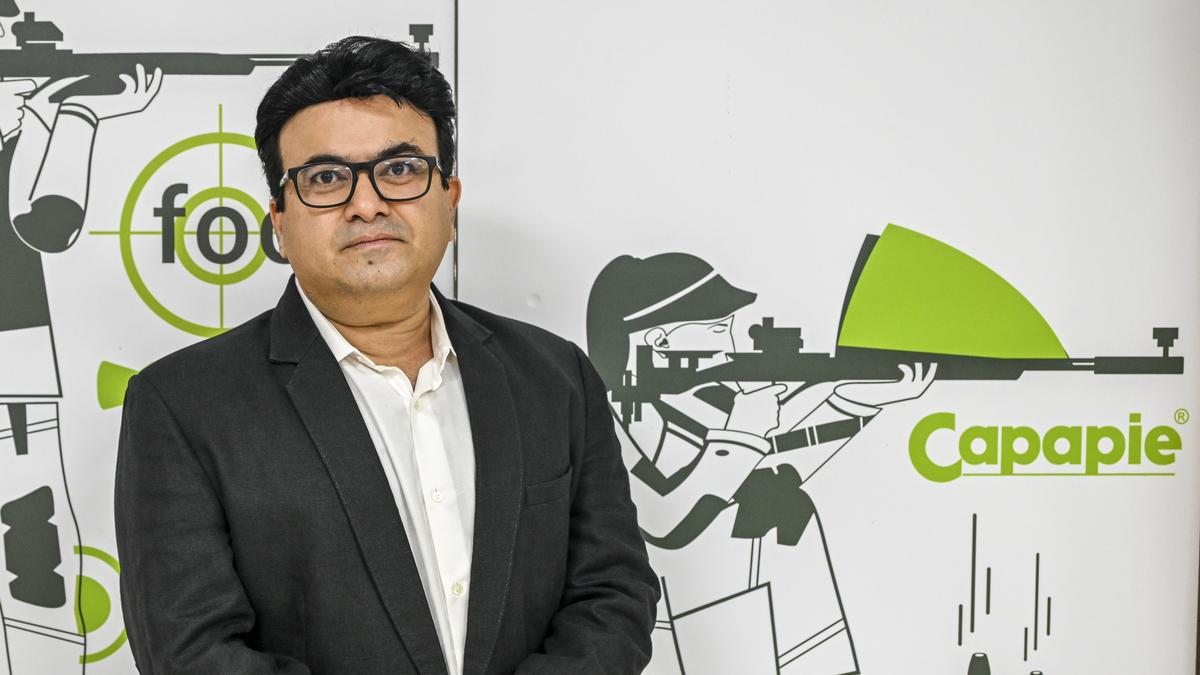Paris 2024 Olympics: How an Indian jacket is set to dominate shooting in the French capital
Having drawn a blank in Tokyo, there might understandably be a hint of nerves among the Indian shooting contingent ahead of the competition at the Paris 2024 Olympics, beginning at Chateauroux on Saturday. Even before a single shot is fired though, there’s one Indian who is supremely confident of his prospects at the National Center for Sport Shooting, the competition venue.
It is Nilesh Rane and Capapie – a Thane-based rifle jacket-making company he founded 27 years ago and whose products are ubiquitous in elite shooting now.
Regardless of how the Indian team does, the gold medallist at rifle events will most certainly be wearing a jacket, the arm of which bears the trademark Capapie patch of a kneeling rifle-shooter on a green triangle.
According to 44-year-old Rane, the challenge – though he has little doubt he will accomplish it – would be to better Capapie’s performance from three years ago. “There were a total of 15 medals – five gold, five silver and five bronze – in the rifle events (men’s and women’s 10m rifle, 10m rifle mixed team, and men’s and women’s 50m rifle three positions) at the Tokyo Olympics. Shooters wearing Capapie jackets won eight of those medals and four of the five gold medals. Shooters wearing our jackets can win every medal in Paris. Results in shooting are, of course, a consequence of training, equipment and coaching but I’d like to think ours is a significant contribution too,” he says.
READ | Paris 2024 Olympics: Shooters heading closer to the bullseye, but not everyone is happy
This is no idle boast. At the Tokyo Olympics, by Rane’s own estimate, some 70 per cent of the rifle shooters were using his jackets. This time, he conservatively guesses, the number is around 90 per cent although Abhinav Bindra – speaking to Sportstar – thinks the number might be even higher.
The reason so many shooters use Capapie’s jacket is simple. Using a patented material and custom tailoring, it provides a massive edge at the elite level. Many feel the rapid rise in rifle scores over the last couple of Olympic cycles is a testament to the obsequiousness of the jacket’s use.

One of the first services Rane offered when he started his business was to allow shooters to get their jackets altered at any time with no extra cost.
| Photo Credit:
Emmanual Yogini/The Hindu
One of the first services Rane offered when he started his business was to allow shooters to get their jackets altered at any time with no extra cost.
| Photo Credit:
Emmanual Yogini/The Hindu
Unlike the kit for most of the other sports, the shooting jacket is critical to performance, especially in rifle events. Main function of the jacket is to support the shooter’s body. “In rifle events, shooters lean away from the target and towards their heels, which is an unnatural position. Jackets were introduced to relieve stress on muscles, tendons, and bones. A properly fitting jacket supports the back and reduces the effort needed to hold that position,” says top coach Heinz Reinkemeier who coached Bindra to a gold medal at the Beijing Olympics.
While shooting jackets primarily reduce stress on the spine, they also provide critical stability for aiming at tiny targets, like the bullseye (10.9), which is about the size of a period at the end of this sentence in size 12 Times New Roman font. “Compared to regular sportswear, a good jacket reduces movement by about 80 to 90 per cent,” says Reinkemeier.
“The latest generation of jackets further cuts that movement by an additional 10 to 20 per cent. If an old jacket allows 30mm of movement per second on your rifle, the new ones reduce it to about 15 to 20mm. That’s a tremendous advantage,” he adds.
ALSO READ | Paris Olympics 2024: Indian shooters out to avenge Tokyo humiliation
While providing support, jackets also have to conform to strict standards of rigidity and stiffness laid down by the International Shooting Sport Federation (ISSF). Capapie has managed to do both.
Reinkemeier was Bindra’s coach when he first noticed Capapie jackets in 2018 while working with Indian junior shooters and had predicted the jacket would take over shooting fairly soon. He has nothing but praise for Rane. “I’ve never met someone so obsessed about jackets as he is,” he says.
Started as a shooter himself
Rane didn’t start out thinking he was going to revolutionise shooting.
Growing up in Mumbai, Rane was always interested in sports though not shooting specifically. He only took up shooting because his grandfather had a nearly 100-year-old boar-hunting rifle and he had heard that it would be easier to get a license once he became a national shooter. Training under Sanjay Chakravarty, he began competing at the state, college and eventually, national level.
Those were early days of shooting in India and equipment was scarce. “If you were a really good shooter, you probably imported a jacket from Germany where there were companies who had been making jackets for half a century. If you were just beginning, you would probably be using something made locally. But the situation was bad. There would be multiple people using the same gun and the same jacket. Now, you can’t think of not wearing customised gear if you want to shoot well but that was not the case in those days,” he says.
The birth of Capapie
Rane got tired of sharing his shooting jacket with others and eventually, decided to make one for himself. “I’m not from a background in the textile or clothing business but I had a good idea of what a jacket looked like. In 1997, I described what I wanted to a leather artisan and got them to develop a prototype for me. I chose leather not because it was the best material but at that time, it was readily available and I didn’t really know what options I had. I wasn’t thinking of a business at all. It was just something that I thought would help me shoot better. I started using it and realised it was getting me decent results,” he says.
Eventually, other shooters started noticing his kit and asked him if he could make one for them as well. The chain of recommendations didn’t seem to stop. Rane was himself a fairly strong shooter at this point – in 2001, he set a then national record score of 1136 in the men’s 50m rifle three positions event and had got a sports quota job in railways on the basis of his performance – but eventually decided to switch full-time to making jackets. “There came a time when people started calling me, not because of my own shooting, but because I made good-quality jackets. People liked it and told others. If someone asked me to make an alteration, I did it. That’s how I started customising it,” he says.
Altering an already sold jacket might not seem like good business sense and Rane admits it wasn’t. However, that wasn’t the only perplexing decision he made. “A shooting jacket is expensive. In those early days of my career, I would make jackets for shooters who were starting out, but the moment they reached a certain level, I’d advise them to go for one of the more well-known brands. A lot of people told me that it made no sense to give up a customer, but my interest was always in getting the best product to the shooter. If I wasn’t confident about my product, I couldn’t recommend it to a shooter,” he says.
While his jackets, first made in Mumbai before shifting to a factory in Thane, were cheaper than imported ones from Germany or Korea, Rane says he saw himself as someone who wouldn’t compromise on quality and wanted the best for his shooters. Even the name Capapie came from the same thinking. “Back when I was thinking of naming my company, I came across this word while going through a dictionary. It’s a French word that means a warrior who is ready for his battle and covered from top to bottom with all his armour. To me, that warrior was a shooter. And it’s my job to make him ready for competition,” he says.
For all his passion, the going was slow in the initial years. Shooting jackets are a very niche market and all of Rane’s customers were from India. “In 2007, I made a jacket that Abhinav Bindra used to win gold at the 2007 World Championships. I thought it would be the turning point of my career but the next year, Abhinav used a German-made jacket to compete and win a gold at the Olympics,” he says.
Although disappointed, Rane has no regrets. He says Bindra has been a big help over the years and he sees his early years not as a struggle but as something that allows him to experiment with materials and pattern making.
When it all clicked!
That tinkering finally paid off in 2014 when Rane came up with a material that he would term Capitex, a synthetic-canvas blend that provided far superior stiffness than previous fabrics had while still being flexible enough to pass the ISSF’s standards.
“I was working with a Russian athlete – Lazar Luginets – at that time when I gave him this jacket to try out at a World Cup in Korea. He knew it was stiff but he wasn’t sure if it would pass the equipment-control tests. When it did, he came to me and said ‘Nilesh, this is like magic,” Rane recalls.
At his factory in Thane, Rane would continue to refine his product. Shooting jackets aren’t a single piece just made of one material but several panels, with different qualities, combined (The back and sides need to provide stiffness, while the elbow section of the trigger arm is coated with a rubber blend to make it easier to hold against the side of the body). “I started with five per cent of international shooters using my jacket but then, those shooters started putting up good scores and through word-of-mouth, we got the numbers we have. Shooters are very resistant to change but when they see something is working well, they have no choice but to shift,” says Rane.
Getting the Chinese on board
Perhaps, the toughest market to crack was the Chinese one. “They were the most reluctant to change. They are extremely particular about what they want but when they saw that everyone else who was starting to use my jackets was doing well, they had no choice. The entire Chinese rifle shooting team switched to Capapie in 2019, just one year before the Olympics and then, they won three gold medals out of five,” he says.
Rane had well wishers telling him not to sell his jackets to the Chinese. “People told me they will copy my jackets and be able to sell it themselves but I took the risk. I had already copyrighted my jacket material and jacket construction but there were other reasons too. Firstly, I wanted to prove that my products could compete with the best in the world and secondly, I knew no one will be able to replicate what I have been able to do. They won’t be able to match the pattern-making quality and the custom-fitting which I give to shooters,” he says.

“I started with five per cent of international shooters using my jacket but then, those shooters started putting up good scores and through word-of-mouth, we got the numbers we have. Shooters are very resistant to change but when they see something is working well, they have no choice but to shift,” says Rane.
| Photo Credit:
Emmanual Yogini/The Hindu
“I started with five per cent of international shooters using my jacket but then, those shooters started putting up good scores and through word-of-mouth, we got the numbers we have. Shooters are very resistant to change but when they see something is working well, they have no choice but to shift,” says Rane.
| Photo Credit:
Emmanual Yogini/The Hindu
He’s not done just yet. Rane’s currently in Chateauroux where he will be speaking to shooters and coaches to try and see how he can further improve his product. “I’m always looking to get better. That’s how you stay in front,” he says.
Moving onwards and upwards
Rane is well ahead of his competition. In five years since he started selling in China for the first time, Rane isn’t just supplying jackets. He’s also opened up a service station in the country where shooters can make custom alterations. “One of the first services I offered when I started my business was to allow shooters to get their jackets altered at any time with no extra cost. My reasoning back then was that if a shooter got taller or leaner or heavier, then the change in his body’s dimension meant he would have to get another jacket that fit him properly. But jackets are expensive. If a parent had to buy jackets again and again, they would eventually just pull their kid out of the sport. I never wanted that to happen. I don’t see myself changing that policy even now,” he says.
It’s a decision that’s won him some of his most loyal customers. “A shooting jacket and trouser kit costs upwards of 2000 Euros. It’s a major expense for young shooters because at that age, your size and weight will fluctuate. When I started shooting in a Capapie jacket, it was a big relief for me that I could actually just get it altered,” says World silver medallist Istvan Peni of Hungary, who finished fifth in 10m air rifle at the Tokyo Olympics.
“They (Chinese shooters) were the most reluctant to change. They are extremely particular about what they want but when they saw that everyone else who was starting to use my jackets was doing well, they had no choice. The entire Chinese rifle shooting team switched to Capapie in 2019, just one year before the Olympics and then, they won three gold medals out of five”Nilesh Rane
By any stretch of imagination, Rane’s done well for himself. His workforce has grown from three when he started his company to 350 on his factory floor now. Although a jacket takes between two and three days to complete once shooter’s measurements are taken, the backlog of orders means the waiting period is a couple of months. He exports, by his estimate, to over a hundred countries in the world and his product is likely to be standing on multiple steps of the podium in Chateauroux.
There is one thing even he hopes for though. “Most of the shooters might be wearing a jacket made by me, but at the end of the day, I’m still an Indian. I don’t think there would be anything better than an Indian wearing my jacket standing on the top of the podium,” he says.



